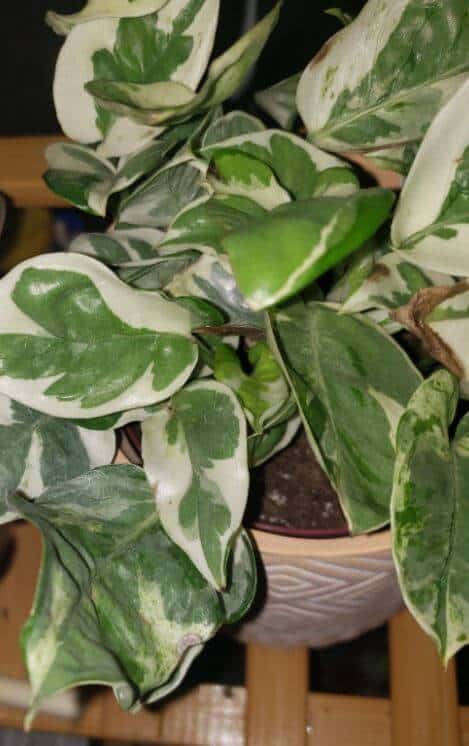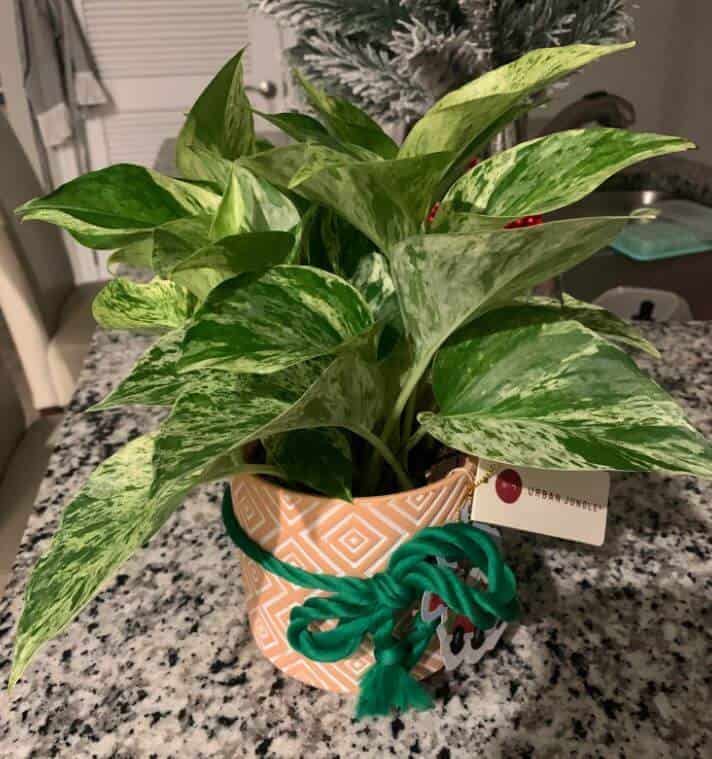Last Updated on January 6, 2023 by a Friendly Gardener
The Petite Mishima plant is one with medium to large leaves. These leaves are light to dark green in color and typically display white spots or streaks on their upper surfaces.
If you have this plant at home or are planning to grow it, you should note that there are some specific care conditions you will need to provide for this plant. You can also grow the plant on your own.
To get some more information about this plant and how you can care for it, you can read through the following sections.
Propagating the Petite Mishima Plant

There are two main ways in which you can grow this plant—by seed or through stem cuttings. You can take a more detailed look at the processes below.
- Source the seeds from a reliable seller or nursery.
- Soak them in some water for a few days and then transfer them to a prepared pot or container filled with soil. You can also sow them outdoors.
- Plant them an inch deep into the soil and cover them with a layer of soil. Sprinkle some water over it.
- If you are using stem cuttings, you can skip the previous steps and start here. Take the stem cuttings from a mature plant and clean them up.
- Apply some rooting hormone to enable quicker growth.
- You can then plant the stem cuttings in your prepared pot.
- Once your seeds or stem cuttings are planted, you can place the pot in a bright but relatively cool location. The sunlight should not be too direct.
- Start caring for the plant (described below) to ensure healthy growth.
Petite Mishima Plant Care

Now that you are aware of the steps involved in propagating the plant, you can move on to some aspects you should know about the Petite Mishima plant’s care conditions.
Note that there are times when you might have to make some adjustments to these care requirements depending on where you live and what kind of climate you experience, although the general conditions will still remain the same.
You can take a look at some of these below.
Sunlight and Temperature
This plant does not actually require too much sunlight. You should find a bright location, but try placing the plant where there is sufficient shade. Make sure you avoid direct sunlight at all costs as this could end up causing the leaves of the plant to burn and shrivel.
The temperature should also be relatively cool, so if you live in a hot climate, it can be best to place your plant indoors, such as on a windowsill. Despite preferring cooler climates, this plant cannot withstand freezing cold temperatures either.
Humidity Levels
This plant enjoys a good amount of humidity, which is why it can be ideal for you to place your plant in humid rooms or spaces. This can include a kitchen windowsill or even a bathroom, although you can easily place a humidifier in one of your rooms too.
If you live in a generally humid climate, then you do not need to worry too much about providing any more humidity than is already present.
Watering
This plant enjoys frequent watering and needs it to survive and thrive. Make sure you water the plant deeply and thoroughly and keep the soil moist enough at all times. You should also establish a watering schedule for your plant so that you can water it regularly.
However, make sure you also wait for the soil to become slightly dry between each watering as too much water sitting in the soil can cause the roots to rot.
Soil

You can make use of any potting mix or soil available in local stores or nurseries. Make sure you add a few elements to it, such as sand, perlite, or moss, so that you can loosen the soil up a bit.
This kind of soil should also provide good drainage of its own. Support this with a pot that has a drainage hole at the bottom so that all the extra water can drain out.
You should also maintain a relatively neutral soil pH.
Ventilation
Keep this plant in a properly ventilated area. Too much compactness can end up harming the plant due to the absence of enough fresh air and movement. Even if the room is small, it should not be too closed in and must have an open window that can support the plant.
This kind of ventilation can also make it easier for the excess water to evaporate.
Fertilizing
This plant can get a good boost using a bit of mild and balanced fertilizer. Make sure you dilute the fertilizer well enough and only provide a small amount of it to the soil. You should carry this out on a monthly basis and only during the months of spring and summer, which is its growing season.
Pruning and Repotting
This plant tends to grow at a rapid rate, which is why you might need to take some shears and prune off some of the dead or drying leaves from the plant. Prune the older growth out too before the growing season commences.
Moreover, once the plant grows too big and if the roots seem to be extending beyond the drainage hole, you will need to take a slightly bigger pot to replant it. This can help ensure some more freedom to the roots.
Pests and Diseases
Fortunately, this plant tends to be quite safe from pests, although there are situations in which mites can pose a problem. Try keeping the plant as healthy as possible to avoid these pests, but if they are already present, remove them using natural oils or mild soapy water and repot the plant.
Final Thoughts
The Petite Mishima plant has medium to large green leaves with white markings. It prefers indirect sunlight, sufficient humidity, frequent water, and good ventilation along with loose and rich soil.
Make sure you repot your plant once it grows big enough so that the roots can continue growing freely enough.

